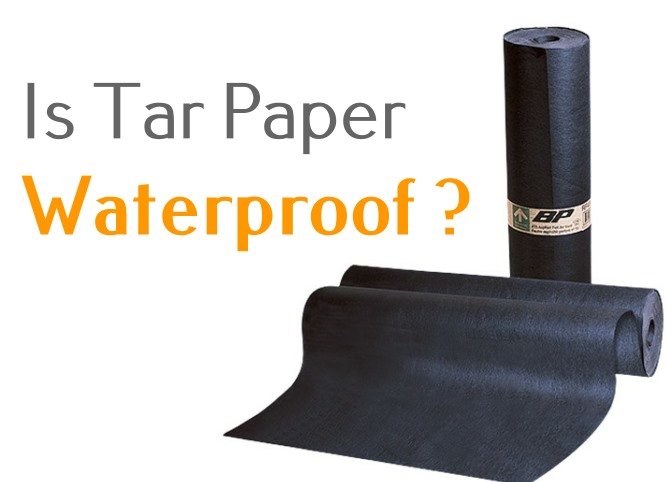Many of us don’t really know what the use of tar paper is unless we are working in a related field or you have experience using tar paper itself. In this article, you will learn about this paper, its use, whether tar paper is waterproof, and whether it is toxic to work with.
What is Tar Paper Used for?
Some of you may have just heard about the existence of tar paper. To briefly explain, tar paper is widely used in construction projects. This paper is a waterproof building material typically used as a felt underlayment.

The paper is also often called roofing felt. The paper was made from various materials, including glass, cellulose, and maybe cellulose fleece. The materials will then be pressed into thin sheets. The sheets will later be treated with asphalt or tar.
So, what is tar paper used for? There are several benefits of roofing felt you can obtain from this paper, including:
- To be used as the sub-roof. This paper is usually used before installing roof shingles. Hence, it can be simply said that tar paper will be used in the roofing process, making tar paper the second defense to protect wood structures from weather threats.
- It can also be used as sheathing, especially on exterior walls. Regarding this, the sheathing will be installed below the siding. Similar to the aforementioned benefit of tar paper, this building material will also protect against weather threats (rain, especially) from reaching the inner wood structure.
- Tar paper is also be used as a vapor barrier, interior air ‘protector’, as well as a cushion for wood floors.
Is Tar Paper Waterproof?
Previously, you have learned that tar paper roof is widely used as a protector for roofs, walls, and floors. The paper provides a valuable layer of protection, shielding the building’s inner structure from various weather threats.
You know, rain, excessive UV, wind, etc., are what make roofing, walls, and floors have their quality ruined over time. For this reason, tar paper is made waterproof to repel water, and adds an essential layer of protection against wet roofing conditions.
Compared to tar paint (tar which is painted on walls), tar paper is way more effective in protecting your building structure from weather threats. This is because tar paint is only dampproof, not waterproof like tar paper. Hence, tar paper is way more effective in tackling weather threats.
How Long Can Tar Paper Be Exposed?
Since tar paper is designed to protect the inner structure of a building, it becomes understandable if this building material will be made weather-resistant. However, since it is mainly used as a secondary defense, you won’t see this as strong compared to the shingles.
Hence, when your first line of defense is ruined, the tar paper will start its ‘duty’ to protect the inner structure of a building, namely the wooden structure of a roof, a wall, etc.
Sources mentioned tar paper would remain its protective feature for less than one month. Even some sources say it can only remain for one week or so. Compared to synthetic material, sure, it may be lacking since synthetic underlayment can protect the inner structure of a building for up to 6 months.
People are also wondering about this as well: is tar paper toxic? The tar itself is carcinogenic, but in the form of roofing felt, it is not considered a toxic material nor a carcinogen. Hence, using this on your roofing structure or other uses is safe.
So, that’s the information you may need to know about tar paper, is tar paper is waterproof or not, and other related things that many people are wondering about. Hopefully, this article is beneficial for you.


